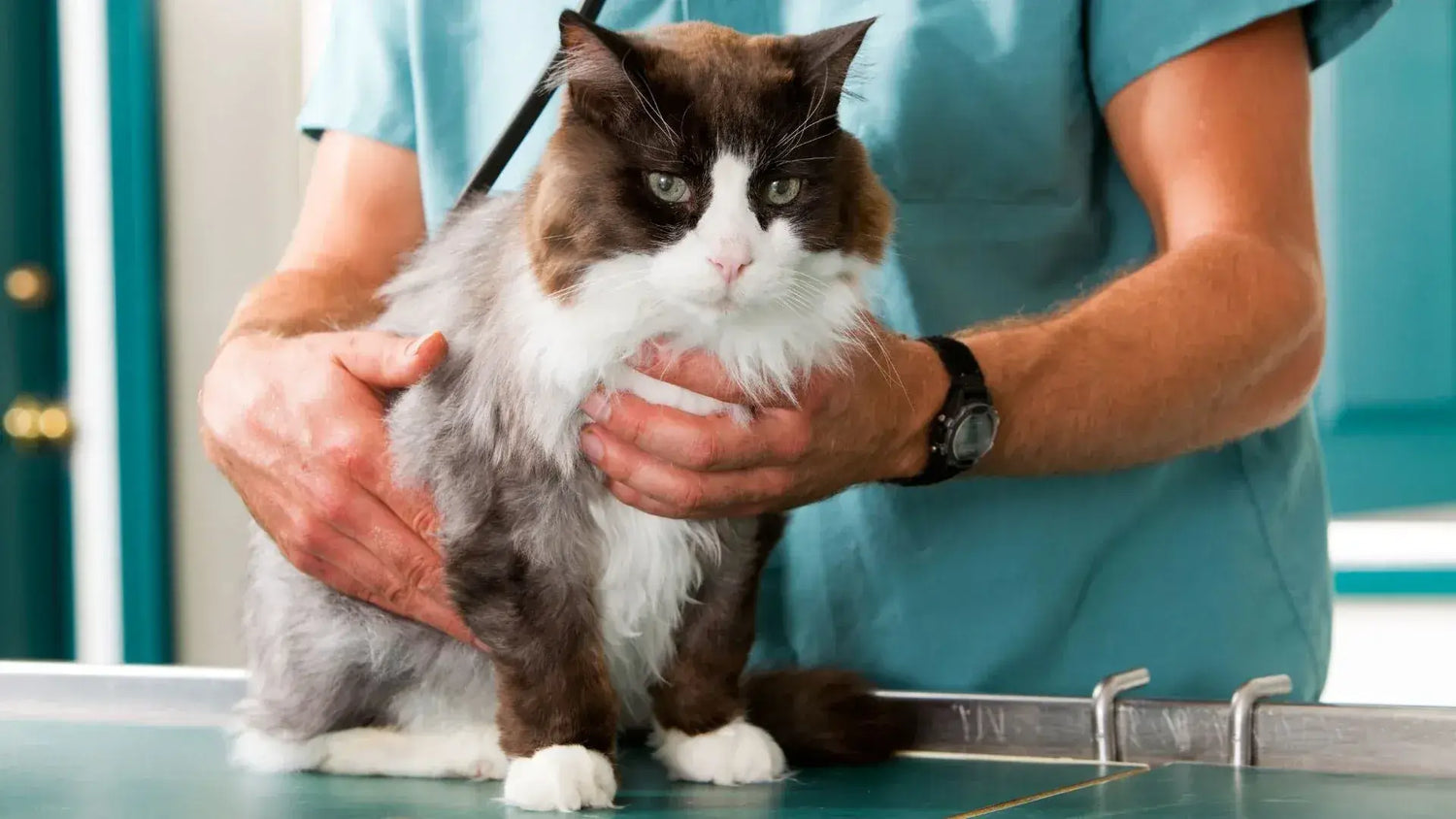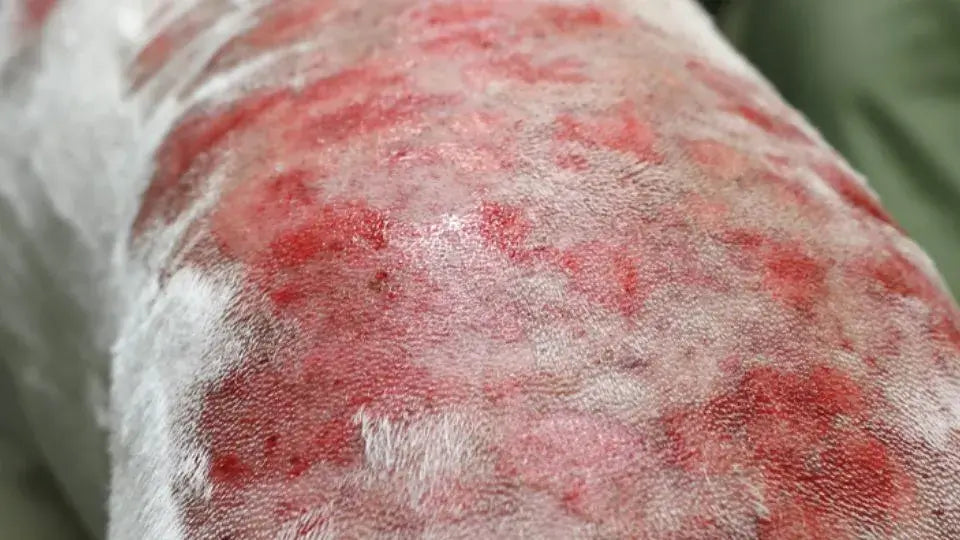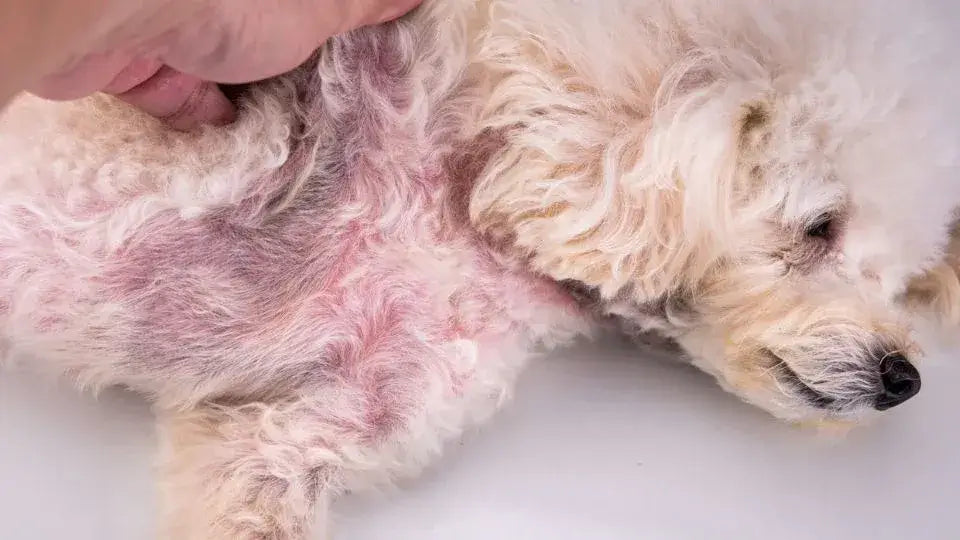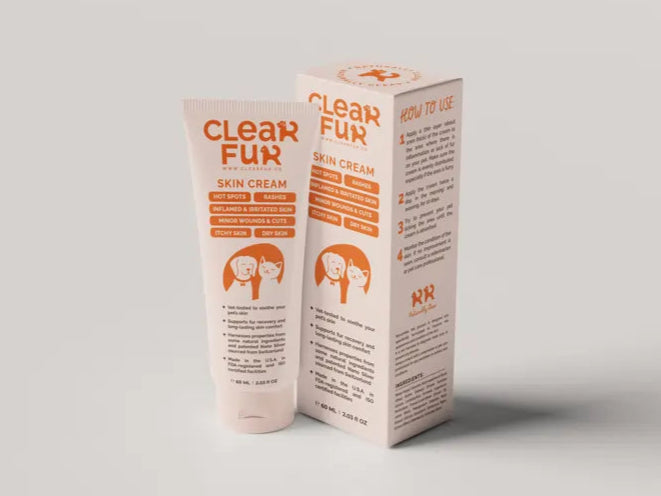Introduction
Fleas and ticks are more than just a nuisance—they can trigger severe skin issues in dogs, leading to painful hot spots. These irritated, inflamed areas of skin develop when pets scratch, bite, or lick themselves excessively due to flea or tick bites. Hot spots can spread quickly, causing distress for both pets and their owners.
Preventing flea and tick infestations is one of the most effective ways to reduce the risk of hot spots and other skin conditions. In this guide, we'll explore how fleas and ticks contribute to skin problems, the best prevention methods, and how to treat existing hot spots.
What Are Hot Spots in Dogs and Cats?
Hot spots, also known as acute moist dermatitis, are red, inflamed skin lesions that develop from excessive scratching, licking, or biting. They can appear anywhere on a pet’s body but are most commonly found on the:
- Neck
- Ears
- Tail base
- Chest
- Legs
Symptoms of Hot Spots
- Red, inflamed skin
- Hair loss around the affected area
- Oozing, pus-filled sores
- Constant licking or scratching
- Foul odor from the wound
Hot spots can develop in both dogs and cats, though they are more prevalent in long-haired breeds or pets with underlying allergies. If left untreated, they can grow rapidly and become infected.
The Connection Between Fleas, Ticks, and Hot Spots
How Fleas and Ticks Trigger Skin Irritation
Fleas and ticks bite into a pet’s skin to feed on their blood, causing:
- Itching and irritation from the saliva they inject.
- Allergic reactions in some pets, known as flea allergy dermatitis (FAD).
- Wounds from excessive scratching, leading to bacterial infections and hot spots.
Even a mild infestation can result in severe itching and discomfort, making flea and tick prevention crucial for maintaining healthy skin.
How Fleas and Ticks Cause Skin Problems in Pets
Flea Allergy Dermatitis (FAD)
Some pets develop an allergic reaction to flea saliva, which leads to intense itching and inflammation. Even a single flea bite can trigger a reaction, making strict flea control essential.
Excessive Licking and Scratching
When a dog or cat experiences persistent itchiness, they try to relieve it by licking, biting, or scratching excessively. This damages the skin barrier, allowing bacteria to invade, resulting in hot spots.
Secondary Infections
If left untreated, scratched or bitten areas can become infected. Moist, damaged skin is a breeding ground for bacteria, making prompt treatment necessary.
The Importance of Flea and Tick Prevention
Preventing fleas and ticks reduces the risk of hot spots and other skin conditions. A consistent prevention routine protects pets from infestations and minimizes discomfort.
Types of Flea and Tick Preventatives
1. Topical Treatments
- Applied to the pet’s skin.
- Provides long-lasting protection.
2. Oral Medications
- Comes in chewable tablets or pills.
- Kills fleas and ticks from the inside out.
3. Flea Collars
- Releases active ingredients gradually.
- Effective for months.
4. Natural Alternatives
- Essential oils like cedarwood and neem (use with caution).
- Apple cider vinegar sprays (helps repel fleas).
Environmental Control: Keeping Your Home and Yard Flea-Free
- Vacuum regularly.
- Wash pet bedding frequently.
- Use pet-safe flea yard treatments.
The Role of Grooming in Preventing Skin Issues
- Brush pets daily to remove loose fur and check for parasites.
- Use flea combs to detect early infestations.
- Bathe pets with flea-repellent shampoos when needed.
Recognizing Early Signs of Flea and Tick Infestations
- Excessive scratching or biting
- Scabs, redness, or hair loss
- Fleas or flea dirt in fur
How to Soothe and Treat Hot Spots at Home
- Clean the affected area with a gentle antiseptic.
- Trim the fur around the hot spot.
- Apply a soothing cream like ClearFur Skin Cream.
- Prevent further licking with an e-collar.
Using ClearFur Skin Cream for Hot Spots
ClearFur’s nano silver technology helps:
- Reduce inflammation and itching.
- Speed up wound healing.
- Provide antibacterial protection.
When to Seek Veterinary Help
- If hot spots spread rapidly.
- If there is pus, foul odor, or severe swelling.
- If your pet seems lethargic or in pain.
Preventing Recurrence: Long-Term Skin and Coat Health
- Feed a high-quality diet with omega-3s for skin health.
- Keep up with year-round flea prevention.
- Maintain regular grooming and hygiene.
Conclusion
Preventing fleas and ticks is one of the most effective ways to protect your pet’s skin and avoid painful hot spots. By using consistent flea prevention, maintaining a clean environment, and grooming regularly, pet parents can help their dogs and cats stay healthy and comfortable.
For extra care, ClearFur Skin Cream offers fast relief and promotes skin healing, making it a valuable addition to any pet's skincare routine.







